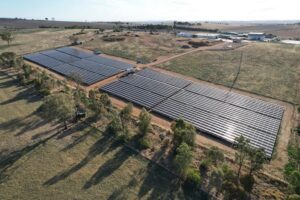The New South Wales (NSW) Labor government has announced a new target for long duration storage as it prepares the country’s biggest state grid for life after coal.
The state has already set a target of 16 gigawatt hours of long duration storage by 2030, but to help fill the gaps between wind and solar output, and shorter duration storage, it has now announced a new target of an additional 12 GWh by 2034.
The announcement comes as state energy minister Penny Sharpe announced that the government would not reduced the eight-hour requirement for long duration energy storage, as had been mooted in recent months.
In a speech to long durations storage developments at state parliament on Thursday night, Sharpe says the government has chosen to set a new target based on eight hour storage rather than fiddling with the terminology.
“We recently carried out a review into the long-duration storage needs for NSW and have been consulting on potential legislative changes regarding long-duration storage,” Sharpe said.
“This additional target [of 12 GWh by 2034] will provide a clear signal for investors and demonstrates that NSW is committed to supporting more long duration storage over the long-term.
“We know many of these projects are complex and have long lead-times. We’re committed to supporting this important sector – we’re in it for the long haul.”
The 20340 date is significant because it is around that time that the last of the state’s four coal generators could be retiring, although units at Bayswater and Mt Piper could remain on a seasonal basis. But more storage, as well as significantly more bulk energy supply in the form of wind and solar will be needed.
Part of the problem is that long duration energy storage is more expensive than similar technology running at shorter durations, and the full capacity is less often used.
Pumped hydro, which is likely to be needed to meet the state’s legislated targets, has found the market particularly challenging despite the eight-hour duration requirement.
The technology struggles to compete with lithium ion batteries on price, as it takes longer to build and has higher upfront capital costs, and it has less flexibility to operate in multiple energy markets.
Lithium ion battery projects have stolen the thunder and three lithium ion battery projects – each boasting eight hours of storage – have been awarded underwriting agreements, known as Long Term Energy Supply Agreements, or LTESAs, in the auctions so far. A compressed air storage facility at Broken Hill has also won an LTESA contract.
Numerous pumped hydro projects, proposed by the likes of AGL, EnergyAustralia and Atco, as long as some longer term projects such as those proposed by former prime minister Malcolm Turnbull, have been pushing for tender mechanisms that would make it easier for their technologies to compete.
In November last year, the NSW government flagged that its then-proposed Energy Services Corporation could somehow act to de-risk pumped hydro projects. Details of how that would work are yet to be rolled out.








